Samsung Galaxy Note 3 Review
by Brian Klug on October 1, 2013 9:00 AM EST- Posted in
- Smartphones
- Samsung
- Mobile
- Android 4.3
- galaxy note 3
Display
One of my only issues with the Note 2 after using it for a long time was resolution. Although the move to a subpixel matrix with a full 3 subpixels per pixel on the Note 2 honestly really put most of my concerns at bay at launch, 720p started to feel limiting further on in that product’s cycle. Having more display area is great, however in Android what really matters is resolution. It was ironic having this phone with a huge display, but 720p resolution that was quickly eclipsed by devices with so much smaller displays. With the Note 3 Samsung moves to 1080p at 5.7 inches, up from the 720p at 5.5 inches in the Note 2, and 1280x800 at 5.3 inches from the original Note.
A question that immediately comes up every time we get a Samsung phone with AMOLED is first, what kind, and second what subpixel unit cell is behind it all, be it an RGB stripe or some other RG,BG alternative unit cell. In the case of the Note 3 we unsurprisingly see Samsung use the same unit cell as they did on SGS4, an offset pattern with green on one line and red and blue on another line. There’s a square blue subpixel with more area than the circular red and green subpixels as well to compensate for the difference in luminous efficiency of the material used in each subpixel type. As I’ve said in the past this isn’t PenTile (although people have started using that brand as a proxy for RG,BG alternatives) but something else entirely, but the ultimate end is still the same, two subpixels per unit pixel and not an RGB stripe.
The question for most normals then becomes – is this a big deal or can a normal human being see it? I’d argue that the subpixels on the Note 3, like the SGS4, are now small enough that they can’t be seen. I used to very picky about this, but I don’t find the new offset RG,BG pattern distracting at all on the Note 3. Subpixel size moves from just above 1 arcminute (1.006 and 1.073 for the Note and Note 2 respectively) down to 0.741 for the Note 3, making them small enough to in theory exceed human eye resolution of 1 arcminute. I won’t break out the huge table or chart, or go over all of that again, but it’s nice to see that finally be the case with the Note 3.
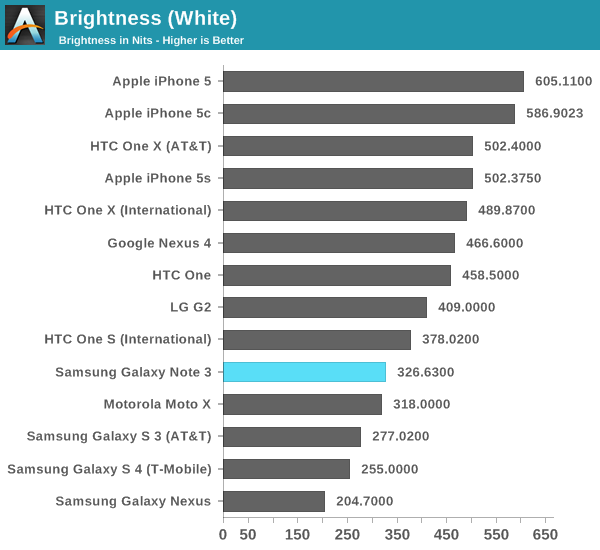
The Note 3 has the same display mode settings as we’ve seen in other generations, these mDNIe toggles allow some control over display color curves. They’re ultimately not a mitigation for Android’s lack of a real CMS and don’t completely solve the oversaturation issue that comes hand in hand with AMOLED’s different spectral curves, but they do help somewhat. These are unchanged as well from the SGS4 – Adapt Display is checked by default and will select which mode to use automatically for first party apps and a few others, but you can select between dynamic, standard, professional photo, and movie manually, which have different tunings for white point, gamut, and saturation. There’s also still the toggle for automatically adjusting screen tone depending on what’s being displayed.
Of the modes and configuration options available, I don’t doubt for a second that the most used one will be the defaults, however if you’re looking for the most sane from a color accuracy perspective it’s still Movie mode with the auto screen tone toggle unchecked. I gave Samsung the benefit of the doubt and ran all my measures in Movie mode as a result, but also took saturation measures of the other modes so you can see the difference in gamut and saturation with what you get under those.

The Standard and Dynamic modes have a ton of oversaturation, extending far beyond sRGB. In Dynamic mode we can also see some compression going on at the higher saturation levels, effectively blowing out those colors even more, with the second to last point almost on top of the last point. Pro Photo mode clamps down gamut and makes saturation a bit more linear, but has some odd other artifacts that show up. With the Movie selection made, the Note 3 display is considerably more controlled and linear, and makes a dramatic difference in how everything appears on the Note 3 during normal use. If you care about display really this is the only setting you should be using.
White point in movie mode is still bluer than I’d like at an average of just over 7100K, but in the all important Gretag Macbeth patch test, Delta-E is pretty low and puts it among iPhone 5, HTC One, and G2 territory. The results under movie mode from the Note 3 are actually nicely controlled. It still isn’t perfect, but there’s at least been an attempt made to give users that option if they don’t want garish colors that might look great on a store display but not so great if you care about matching photos you’ve taken to a display or print later, or web content between desktop and mobile.
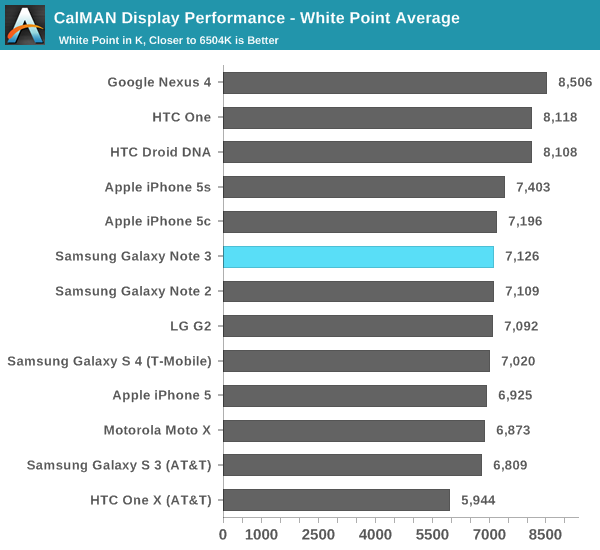
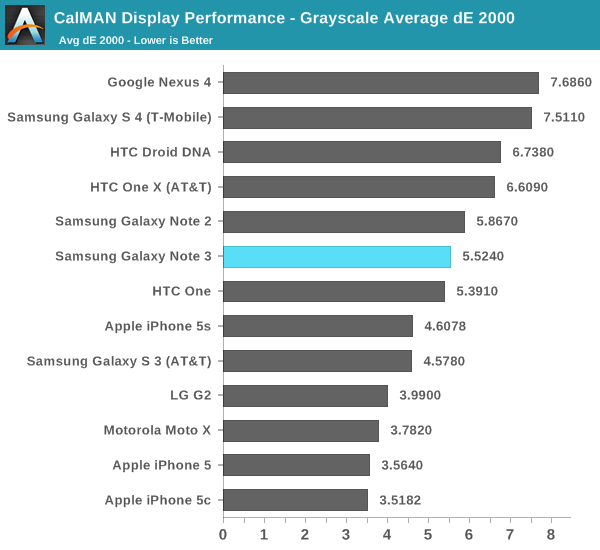
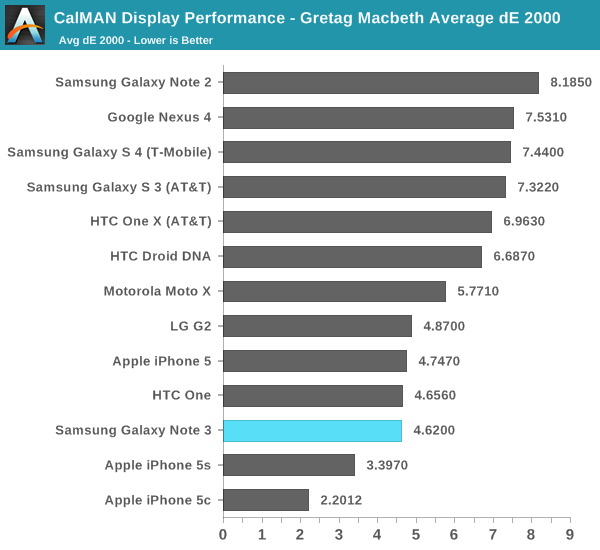
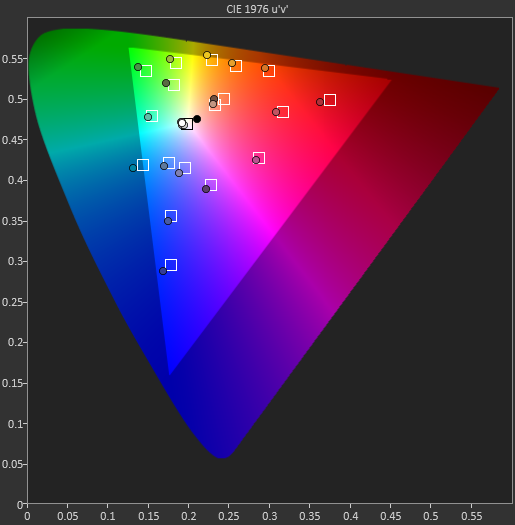
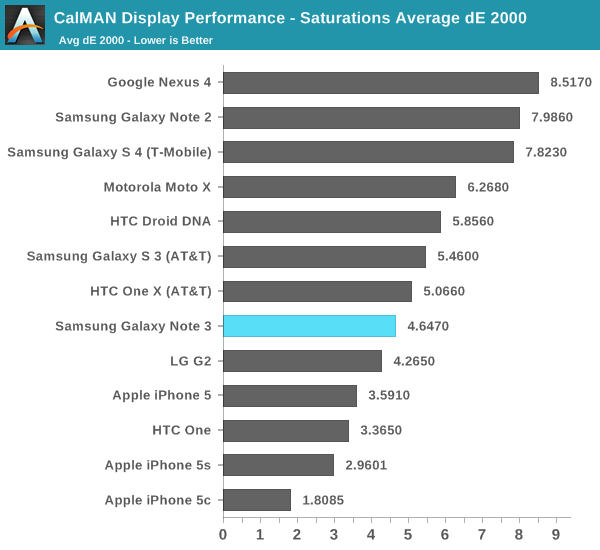



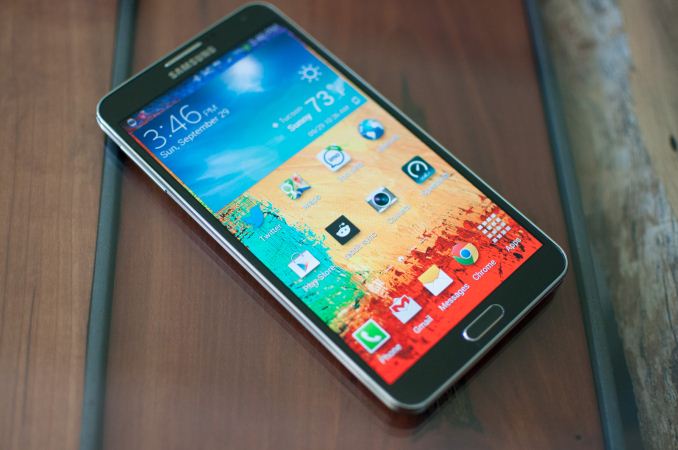
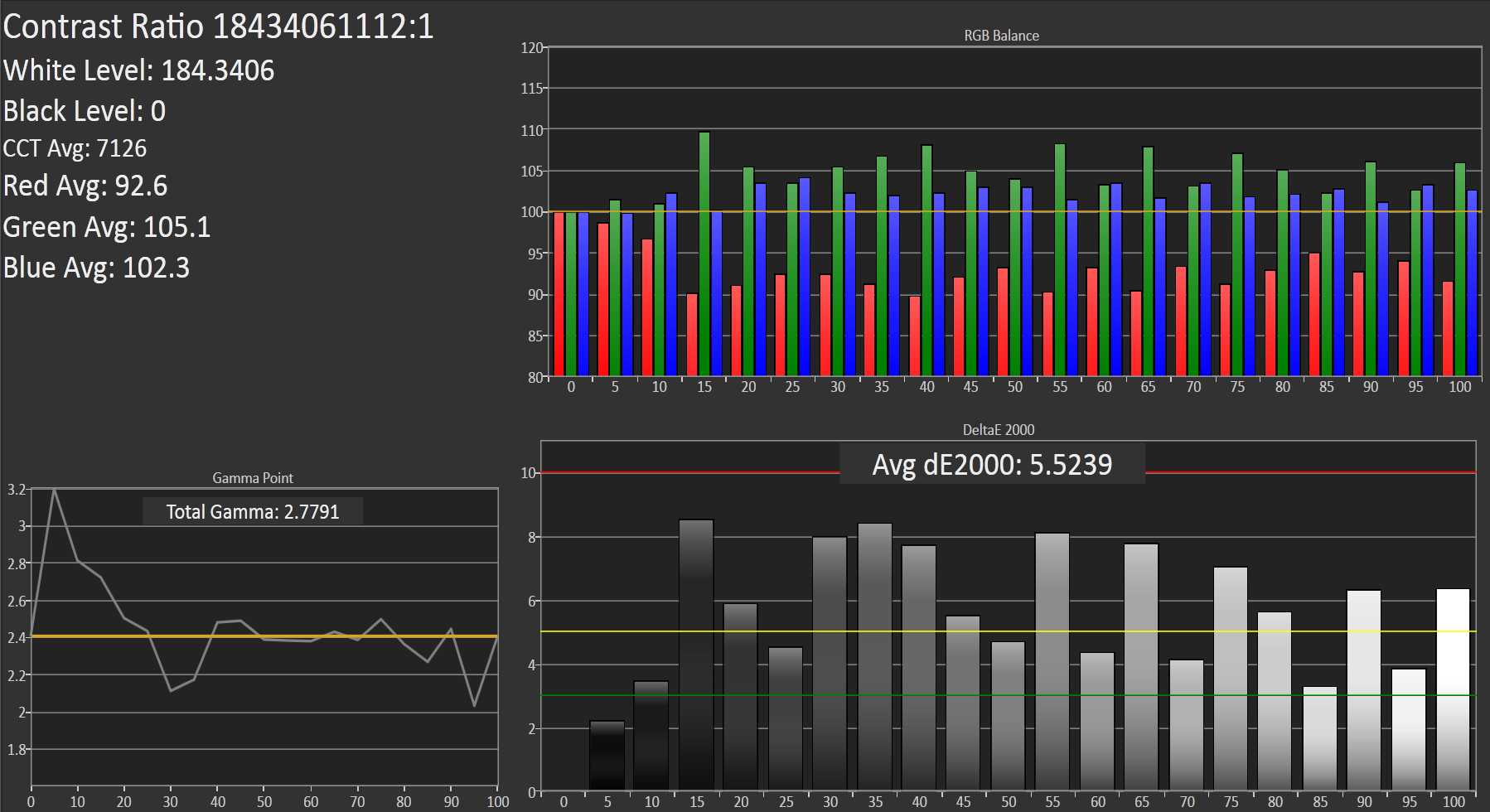








302 Comments
View All Comments
smartthanyou - Tuesday, October 1, 2013 - link
Struggling? I don't understand. They are cheating, it seems simply enough of a concept to me. The fact that others are doing seem irrelevant.If you a review a product that is doing this shine a big bright light on it. You might also consider calling out other reviews of the same product that ignore the problem.
vFunct - Tuesday, October 1, 2013 - link
A simple repackaging of benchmark tests so that they can't be detected by Samsung would do. At this point just assume that all vendors cheat, and set up your benchmark suites so they aren't detected.We want to know how these products act in the real world, and benchmarks are supposed to represent that.
We don't want fake results.
itpromike - Tuesday, October 1, 2013 - link
Anand, what Ars did to circumvent the benchmark fluffing was recompile the application with different package names... could you do something similar, then re-run your benchmarks and update this article? Or are your benchmarks already circumventing the fluff?DERSS - Tuesday, October 1, 2013 - link
Do not struggle over this. Put an asterisk at SGN3 results with note that in reality (versus overdrive mode for test) this device is not any faster than LG G2. It would be fair; problem solved.dugbug - Wednesday, October 2, 2013 - link
Yeah I've wondered if geekbench will respond similar to the juicing debate among baseball statistics nerds. Do they purge the benchmarks... or placing an asterisk.... or just nothing. Let specs chasers live in a weird little unaware lie.Voldenuit - Tuesday, October 1, 2013 - link
"We've been struggling with how to deal with this one for a little while now."Easy. Rename article headline to:
"Shamesung Galaxy Note 3. Cheaters Never Prosper".
Also, put a strikethrough on all the Samsung benchmarks.
bji - Wednesday, October 2, 2013 - link
You should ask that the benchmark authors make their tools harder to cheat on. The should randomize the name of the benchmark program at installation time or something, similarly with whatever values are necessary to be randomized to prevent the benchmark from being detected as a benchmark by the cheaters.Obsoleet - Tuesday, October 8, 2013 - link
I've seen a lot of unprofessional stuff going on at AT, regarding Nvidia and Intel for years. I have no skin in the game regarding Samsung, the Note3 or anything else but I really find this to be the last straw. I actually use a GS3.I'm done reading your site, Anand.
Call it cheating. That's what it is, you know it. What is your problem? How can we trust you or your staff??? Wake up and stop taking bribes, or whatever is causing you to do this kind of crap.
Chillin1248 - Tuesday, October 1, 2013 - link
I agree.As an extremely long time Anandtech reader, I am very disappointed that they decided to run the benchmarks with the "boost" in place instead of trying to figure out how to disable them (like ARSTech) or waiting for a workaround.
These benchmark results should be re-run with ARSTechnica's method in place of the artificially inflated scores we have now here.
Squuiid - Tuesday, October 1, 2013 - link
+1. You are essentially offering a more favorable review with inflated benchmarks and actively encouraging this deception. It's no wonder Samsung continue to cheat.